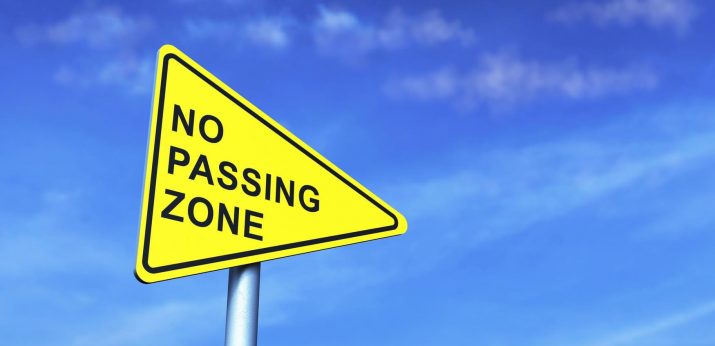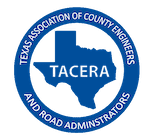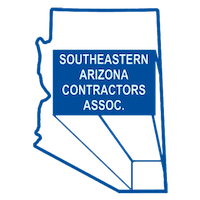Have you ever driven down a road and thought about the stop signs around you that seem so perfectly placed? That familiar red octagon is a sign that nearly everyone has seen in their lives. It stands tall at intersections and lets you know when and where you have to stop.
But what determines where the stop sign is placed? Who says what the height of a stop sign should be? Are there any rules that regulate where they can be placed? These are most likely things you haven’t thought about before, and the more you think about it, the more you might realize that traffic regulations are a bit of a maze.
That’s exactly why we’re writing this article. We’re going to help you better understand stop sign placement standards. Since 1984, our team at Transline Industries has been at the forefront of creating signs and traffic-calming solutions. From pavement markings to construction signs, we’ve exceeded expectations and ensured road safety always comes first.
Get ready to take a closer look at the world of stop sign placement standards, where every small detail is important in making our roads safer.
Mastering Stop Sign Placement Regulations
In this section, we will look closely at some of the stop sign placement standards. Get ready to learn about some of the guidelines that shape where stop signs stand.
Fundamentals of Stop Sign Placement Standards
When it comes to stop sign placement regulations, one of the most important things is where they’re placed. Think about this for a moment. If you’re driving along the road and start approaching an intersection with a stop sign that you can’t see, it doesn’t have much use, does it?
That’s why the regulations surrounding where they’re placed are so important. The rules dictate where they’re positioned, and characteristics such as line of sight and potential obstructions are also carefully considered throughout this equation.
The height of a stop sign is a carefully calculated measurement that is supposed to catch the attention of drivers at the right moment. Stop signs are 30 inches in width from each side of their octagon. The STOP in white uppercase letters is 10 inches tall. On some expressways with multiple lanes, 35-inch signs, and 12-inch tall STOP lettering are used.
When you think about the traffic sign placement standards of stop signs, they shouldn’t be considered constraints. Adhering to the guidelines of stop signs goes beyond just legal formalities. When everyone abides by the rules attached to stop signs, it improves the safety of all road users.
Optimal Stop Sign Placement for Maximum Safety
Even though you may not pay much attention to the placement of stop signs, their visibility depends on their precise locations. It’s a meticulous process that goes hand-in-hand with ensuring compliance with the applicable stop sign placement regulations.
A stop sign needs to capture the attention of drivers exactly when needed, and there are several factors that play a role in where they’re placed. The type of road, speed limits, and sight distance are all considered when it comes to where the stop sign should go.
High-speed areas typically require signs placed well in advance, so drivers have enough warning that they should be stopping. The sightlines of complex and/or confusing intersections also need to be evaluated to ensure signs are visible to all drivers. There needs to be a balance and a strong understanding of the characteristics of each location before stop signs are placed.
Technical Specifications of Stop Signs
Stop sign specifications can get a bit more technical than you’d like, but it’s for the safety of everyone on the road. In this section, we’re going to take a deeper look at the stop sign size and height of a stop sign. We’ll also try to debunk common misconceptions surrounding these signs.
As you’re probably now aware, the dimensions of stop signs play a huge impact on how visible they are to road users. As we mentioned briefly earlier, stop signs are 30 inches in width. This helps to improve recognition so drivers can easily identify when approaching a stop sign, even from a distance.
The stop sign height is also just as important. Stop signs are positioned 7 feet from the ground to the bottom of the sign in urban areas and 5 feet in rural areas.
Misconceptions of Stop Signs
Sometimes, people tend to develop misconceptions about things they don’t know much about. One common misconception about stop signs is that larger ones have a much more significant impact than smaller ones. This simply isn’t the case. The size of stop signs is carefully determined to ensure their visibility without being too distracting.
Imagine if you’re driving down a busy stretch of highway and you see a massive stop sign upcoming on your right side. It’s so big that it’s blocking your view of oncoming traffic in the intersection to the right of you. This example shows how easily you can get into an accident from something as simple as a stop sign being too large.
Another misconception is the belief that the height of stop signs doesn’t matter. The truth is that the heights are designed to be no taller and no shorter so they don’t cause obstructions in the line of sight for other drivers. They’re just the right height and must be that high to be noticeable on the road.
By now, you’re probably starting to see the importance of compliance and durability with traffic sign products. At Transline Industries, we offer an extensive range of traffic sign products that meet both criteria. Browse our traffic control signs for sale or contact us with any questions you have regarding them.
Compliance and Challenges: Navigating Regulations and Placement Issues
Compliance with stop sign regulations is important in the field of traffic control. In this section, you’ll learn more about the challenges associated with illegal stop sign placement, along with some associated consequences and safety risks.
Addressing Illegal Stop Sign Placement
Illegal stop sign placement comes with severe risks to road safety and can lead to serious consequences. When stop signs aren’t placed according to regulations, it can:
- Create confusion among drivers
- Disrupt the flow of traffic
- Increase the likelihood of accidents
If you don’t know much about the legal placement of stop signs in the first place, it can become difficult to figure out if they’re placed according to regulations or not. Recognizing a non-compliant stop sign can help you take action and do your part to increase road safety.
- Keep an eye out for signs placed too close or too far from intersections. This is a red flag that they’re not placed appropriately.
- Stop signs shrouded by vegetation or other debris and are difficult to see are another indicator that the sign isn’t placed according to regulations.
If you notice either of these occurrences with stop signs, contact your local traffic authorities. Give them specific details on the location and why you think the stop sign isn’t compliant. Being proactive about something like this helps prevent illegal stop sign placements and makes everyone on the road safer.
Decision-Making in Stop Sign Placement
Who decides where stop signs are placed? Various authorities and factors guide the specific placement of stop signs. For starters, the jurisdiction that owns the road determines where stop signs are placed, and they need to adhere to the Manual on Uniform Traffic Control Devices (MUTCD) guidelines.
Beyond that, the federal law, under the U.S. Department of Transportation, is responsible for establishing conformance with the MUTCD standards. The Federal Highway Administration endorses the MUTCD and serves as the national standard for traffic control signs on public roads.
At the state level, specific laws are established by the State Traffic Commission. This ensures standardization and uniformity across the different signage regulations. They specify circumstances for installation, emphasizing factors like traffic flow, intersection characteristics, and the need for control without using stop signs for speed regulation.
The MUTCD provides guidelines emphasizing that stop signs should not be used for speed control. Instead, factors such as the following influence the decision on which street to install a stop sign:
- Pedestrian activity
- Visibility
- Uninterrupted flow of traffic
- Sight distance
The goal is to minimize stops while ensuring safety, utilizing engineering judgment to determine the appropriate street for stop control.
Understanding the complex interplay of federal and state regulations and engineering judgment might seem a bit confusing. It’s all part of the decision-making process for stop sign placement. Authorities must navigate these guidelines to create an effective and safe traffic control environment.
Importance of Adhering to Stop Sign Placement Standards
Properly placing a stop sign is more than just following the rules. It’s something that helps to prevent accidents, improves road safety, and helps promote the continuous and seamless flow of traffic.
Accident prevention: Strategic stop sign placement is a proactive measure to ensure drivers stop at certain intersections or landmarks to avoid potential conflicts with other vehicles. This also improves road safety for pedestrians walking around urban and rural areas. Stop signs enhance the predictability of traffic movements while reducing the risk of collisions. With over 700,000 annual crashes at stop signs, it’s proof that everyone should take these signs seriously.
Smooth traffic flow: When stop signs are placed according to standards, they facilitate smooth traffic flow. Have you come across an uncontrolled intersection where vehicles are driving every way at any time they want? These intersections don’t have any traffic control systems to determine the right-of-way. While these intersections are typically in areas with little traffic, stop signs do give drivers a better and safer experience.
Legal and safety implications: Ignoring stop sign placement standards has serious legal and safety implications. Traffic control regulations are set in place to improve the safety of everyone using the roads. They’re also used to ensure a straightforward transportation system. Not abiding by the regulations compromises safety and can lead to fines and liability concerns if accidents occur.
Upholding Safety Through Standardized Stop Sign Placement
As we wrap up this guide, we hope you have a better understanding of stop sign placement standards. Remember, the position of stop signs follows specific federal and state guidelines and helps prevent accidents, enhance road safety, and ensure traffic flows efficiently.
To ensure you’re complying with regulations and getting reliable signage, consider partnering with seasoned traffic solution providers like us at Transline Industries. We have a proven track record in delivering traffic control solutions, and we’re all about upholding road safety.
Take the next step in road safety and look through our comprehensive range of traffic control solutions so that every driver has a safer and accident-free experience.Navigating Stop Sign Placement Standards: Ensuring Safety and Compliance













